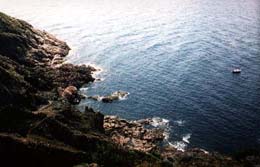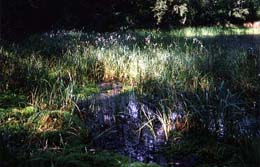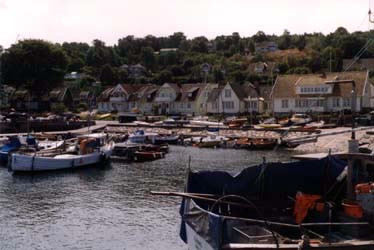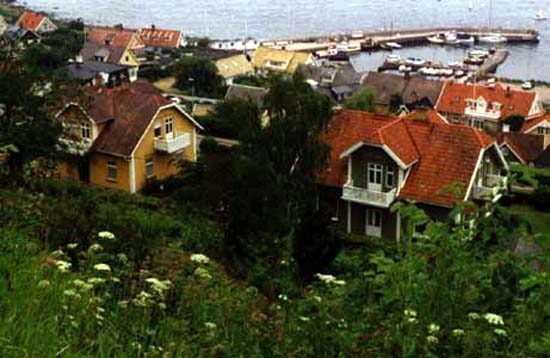Langgaard's Scandinavia
Kullen and Helsingborg (Scania)
Every summer in the years 1898-1908, the Langgaard family spent their summer holidays on Kullen, in the fishing hamlet of Arild (Arildsläge). This place provided the setting for Langgaard's happy childhood summers (from the age of 5 to15), and he became very close to many local people, who were almost family.
Kullen is a peninsula, stretching out from Helsingborg in a northeasterly direction. It is a massive piece of rock, reaching a height of 187 m above sea-level, and is characterised by lush vegetation and beautiful scenery. Nothing like it is found in Denmark, except on the island of Bornholm.


Impressions of the natural surroundings on Kullens were interpreted in musical terms by Langgaard in his 1st Symphony (later entitled Klippepastoraler (Pastorals of the Rocks)), part of which was written in Arild in 1908, and Symphony No. 10 Hin Torden- Bolig (Yon Dwelling of Thunder) (1944-45). These compositions evoke both the greatness and drama of nature, as well as its association with fairy-tales and adventure. (Photos 1985).
Langgaard visited Arild in 1924, when he gave a concert in the nearby parish church, Brunnby Kirke. From 1931 onwards
- with the exception of the war years 1940-45 - he returned very summer to Arild and Kullen for the next 20 years, now
accompanied by his wife, Constance Langgaard. On their way there they used to stay with friends in Helsingborg, which
Langgaard found an attractive city, and which lent its name to the title of his Symphony No. 12 (Hélsingeborg) in
1946.

The town was more lively in Langgaard's time, but even so, Arild has preserved the romantic idyll from around
the turn of the century. At the beginning of the 20th century, the two houses that can be seen in the
foreground on the photograph below belonged to Mrs. Troedson's Boarding House, where the Langgaard family lived,
and where Anne Marie and Carl Nielsen stayed for a few days in the summer of 1907. Arild was 'discovered' by artists in
the 19th century, in the same way as Skagen and Hornbæk in Denmark - and became a very popular
holiday and bathing centre for Danes and Swedes alike.
Today, the two houses form an annexe to the Hotel Rusthållergården, so it is possible to get a room with
the same view over the fishing hamlet and Skälderviken that Langgaard enjoyed when he was here! (Photos 1992,
1994).

![]()